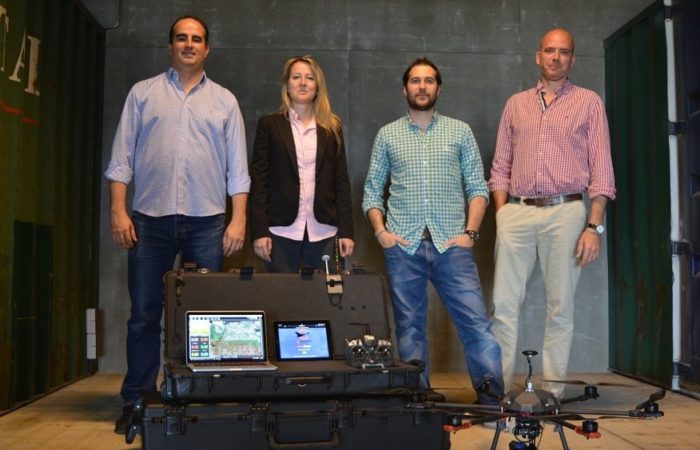
We analyze this Spanish startup that develops solutions for air navigation with the aim of showing what movements should be done when embarking on a business project.
Entrepreneurship is not easy in Spain for very different reasons and doing it in technology is almost even more complicated. Therefore, any project that goes forward based on effort and innovation is welcome. That is the case of Canard Drones, a Spanish startup that develops solutions to improve air navigation and, as the name suggests, does it with drones.
This case is a good example of what steps to take a company with these characteristics in motion.
First of all, can you tell us how the idea of Canard Drones came about?
Canard was born to cover a business opportunity detected by one of the partners, Jorge, a serial entrepreneur with a great business sense and experience in other startups. He was the first to ask himself this question: Why not use a drone to perform inspection of aids to navigation on airstrips, instead of manned aircraft? The benefit seemed clear, it would be much cheaper and the problems of availability of the calibrator aircraft would be solved.
He immediately started looking for people to validate the idea and asked the same question to me, who was working at AIRBUS at the time, because he knew him from the IE Business School. Rafael, a classmate of Jorge’s college and university, was the next to join the project. And finally, Rafael introduced Juan, who has a master’s degree in UAV design, a former INDRA partner, where both had worked in military communications. So Canard was born with the knowledge and ideal experience for the execution of this great idea.
And what does this idea consist of?
Canard provides inspection and calibration services for air navigation support systems (NAVAIDs) using drones instead of manned aircraft. For the air transport industry, safety is the top priority. Airports around the world should verify the condition of the runway and the status of navigational aids located near the runways of the airport, which should be periodically inspected from the air for compliance with national regulations based on standards international.
Is that a big change? To perform the required flight inspections, airports use flight inspection aircraft, which are executive models with expensive equipment and onboard consoles. The current practice of conducting inspections with manned aircraft has a very high direct cost to the airport. On the other hand, flight planning and inspection schedules are often affected by weather conditions or lost flight spaces. The inspection procedure of Canard, through the use of RPA and the software we have developed, offers a more automatic, faster and cheaper solution.
As a startup, what is needed for the business project to be consolidated definitively?
We have received 16 international awards for innovation and entrepreneurship during our first year, and Canard has been considered one of the most promising European startups, receiving a significant amount in public financing (Finodex) and the support of prestigious entities, such as the European Space Agency, being incubated in the ESA BIC Madrid. However, consolidation can only come if we are able to sell our products. The market is sovereign and this happens only by having a very good product and providing a service of very high quality, thinking of each of the customers.
What products make up your offer?
Canard develops technological solutions formed by systems of RPAs (drones) and applications to inspect airport runways and calibrate their NAVAIDs in an automated way, thus increasing the efficiency of these procedures. Our current portfolio consists of two services: calibration of the light system that helps aircraft landing, called “Precision Approach Path Indicator” (PAPI), and support for the inspection and calibration of a radio help that guides aircraft in the landing “Instrument Landing System” (ILS). Besides, we have three other R + D + i projects that we hope will soon be available on the market.
What are the possibilities of drones as key elements for aviation?
Possibilities all. Everyone talks about drones and it’s weird the day I do not hear the phrase “drones are the future”. It is clear that they have innumerable applications and that their use will improve, who knows if revolutionize, our industrial sectors. But for this we have to overcome the main obstacle, the regulatory issue (flights in controlled airspace, use of airspace guaranteeing security, etc.). The modification of regulations in aeronautics is logically a very slow process. It will take a long time to see the sky crossed by people transport drones, but it will surely arrive.